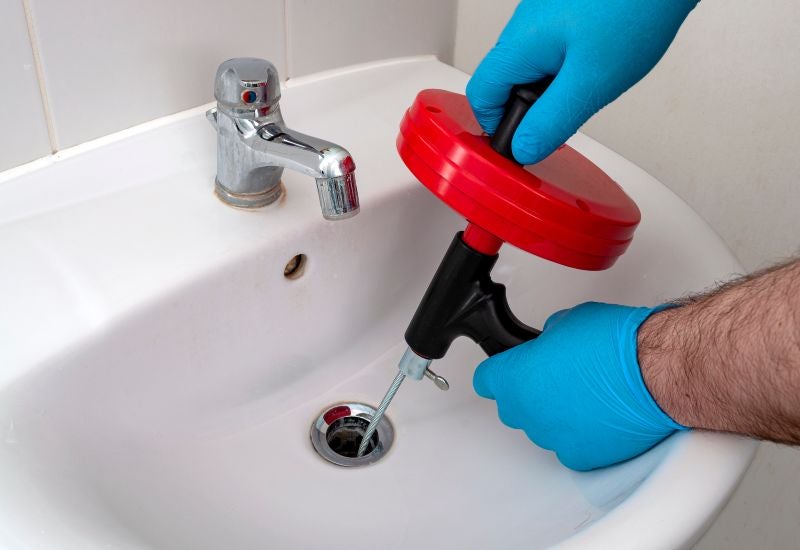Successful Plungers and Drain Cleaner Methods: Key Practices
Successful Plungers and Drain Cleaner Methods: Key Practices
Blog Article
The publisher is making a few great annotation related to Tips on How to Effectively Use a Plunger as a whole in the content following next.

Intro
Correct upkeep of home drains pipes is crucial for avoiding obstructions and guaranteeing smooth water circulation. Among the secret devices in every homeowner's toolkit is the bettor, alongside different drain cleansers developed to tackle persistent clogs effectively. This article explores how to make use of plungers and drain cleansers properly to maintain your drains moving easily.
Area 1: Recognizing Plungers
Types of Plungers
There are several kinds of bettors offered, each created for different kinds of drains pipes and obstructs. One of the most typical kinds consist of cup bettors, flange bettors, and accordion plungers.
How Plungers Job
Plungers work with the principle of developing stress and suction to remove obstructions. When appropriately used over a drain, they produce a vacuum that can pull out particles or separate clogs.
Picking the Right Bettor
Selecting the best bettor depends on the type of drainpipe and the nature of the clog. Cup plungers are suitable for sinks and bathtubs, while flange plungers are much better matched for commodes as a result of their layout.
Usual Errors with Plungers
Avoiding these errors makes sure effective plunging: incorrect seal around the drainpipe, inadequate pressure, and not clearing bordering debris.
Area 2: Using Plungers Successfully
Preparation
Before diving, ensure the plunger covers the drainpipe entirely and creates a limited seal. Clear any kind of noticeable debris around the drainpipe opening.
Technique
Begin with mild diving movements to build suction. Boost pressure gradually, making use of a consistent rhythm. Repeat as needed up until the drainpipe gets rid of.
Fixing Tips
If plunging does not work, try changing the seal, using oil jelly for a better seal, or using a different sort of bettor.
Area 3: Comprehending Drainpipe Cleansers
Kinds Of Drain Cleaners
Drain pipes cleaners can be chemical or enzymatic. Chemical cleansers utilize strong chemicals to dissolve blockages, while enzymatic cleansers utilize all-natural enzymes to break down raw material.
How Drainpipe Cleaners Job
Chemical cleaners respond with clogs to liquify them, while enzymatic cleansers break down natural materials like hair and oil without hurting pipes.
Safety Considerations
Constantly use handwear covers and eye protection when making use of chemical drain cleansers. Guarantee appropriate ventilation and adhere to supplier directions meticulously.
Eco-Friendly Alternatives
Consider using vinegar and baking soda or enzyme-based cleansers for eco-friendly options that are safer for pipelines and the atmosphere.
Area 4: Making Use Of Drainpipe Cleansers Successfully
Application Strategies
Put chemical cleaners straight into the drain opening. Allow them to work for the advised time before purging with warm water. Enzymatic cleaners should rest overnight.
Safety measures
Stay clear of blending various types of cleaners, as this can generate poisonous fumes. Never use chemical cleansers together with a plunger, as spilling can take place.
Managing Persistent Blockages
For relentless obstructions, take into consideration making use of a pipes snake or calling an expert plumbing technician to avoid damage to pipelines.
Verdict
In conclusion, understanding just how to utilize plungers and drainpipe cleansers properly is essential for preserving healthy plumbing systems. By choosing the right devices and strategies, home owners can tackle minor clogs and prevent significant plumbing concerns down the line.
How to Use a Plunger to Unclog a Drain
The humble plunger is a simple yet effective tool for breaking clogs in sinks, tubs and toilets. This handy tool is easy to use. You can make the most of its power if you understand how it works. Ready to dive in? Here’s what you need to know.
Safety First!
Never use a plunger with drain chemicals. Water will splash as you work, and the chemicals can spatter, burning skin and eyes. It’s a good idea to use rubber gloves and wear safety goggles when you work on a clog.
Choose the Right Tool for the Job
Plungers come in two different styles. Sinks, bathtubs and showers require a cup plunger. Like its name suggests, the rubber end is shaped like a cup. Use a flange plunger on toilets. These plungers have a rubber funnel extending from the cup. A plunger needs to be big enough to cover the drain.
Ready, Set, Plunge!
Coat the rim: Coat the plunger rim with petroleum jelly. This helps make a better seal. Block outlets: Hold a wet rag over nearby outlets such as the overflow vent or the drain in a second sink. Release air: Insert the plunger at an angle into the water. Water will displace air in the cup. A water-filled cup is more forceful than one filled with air. Keep the plunger upright: Hold the plunger perpendicular to the drain. Use fast, forceful strokes, but make the first stroke gentle. The first stroke can create a splash if the cup still contains air. Thrust the plunger 15 to 20 times. Snap off the plunger: The final stroke should be a strong upward motion that ends when the plunger snaps off the drain. Repeat the process: you may need to repeat this sequence several times. When the water drains away, your work is done. High-five! https://plumbernw.com/blog/how-to-use-a-plunger-to-unclog-a-drain/

I ran across that blog post on Tips on How to Effectively Use a Plunger while looking around the internet. Enjoyed reading our write up? Please quickly share it. Help another person check it out. Many thanks for your time invested reading it.
Further Details Report this page